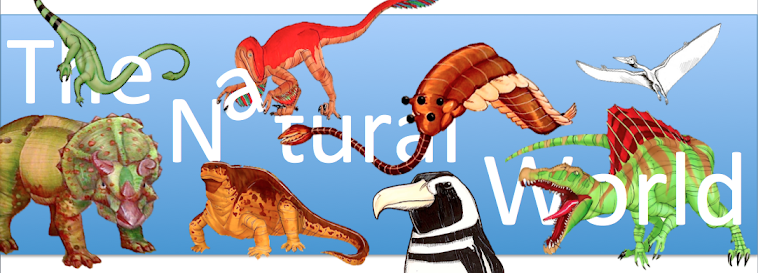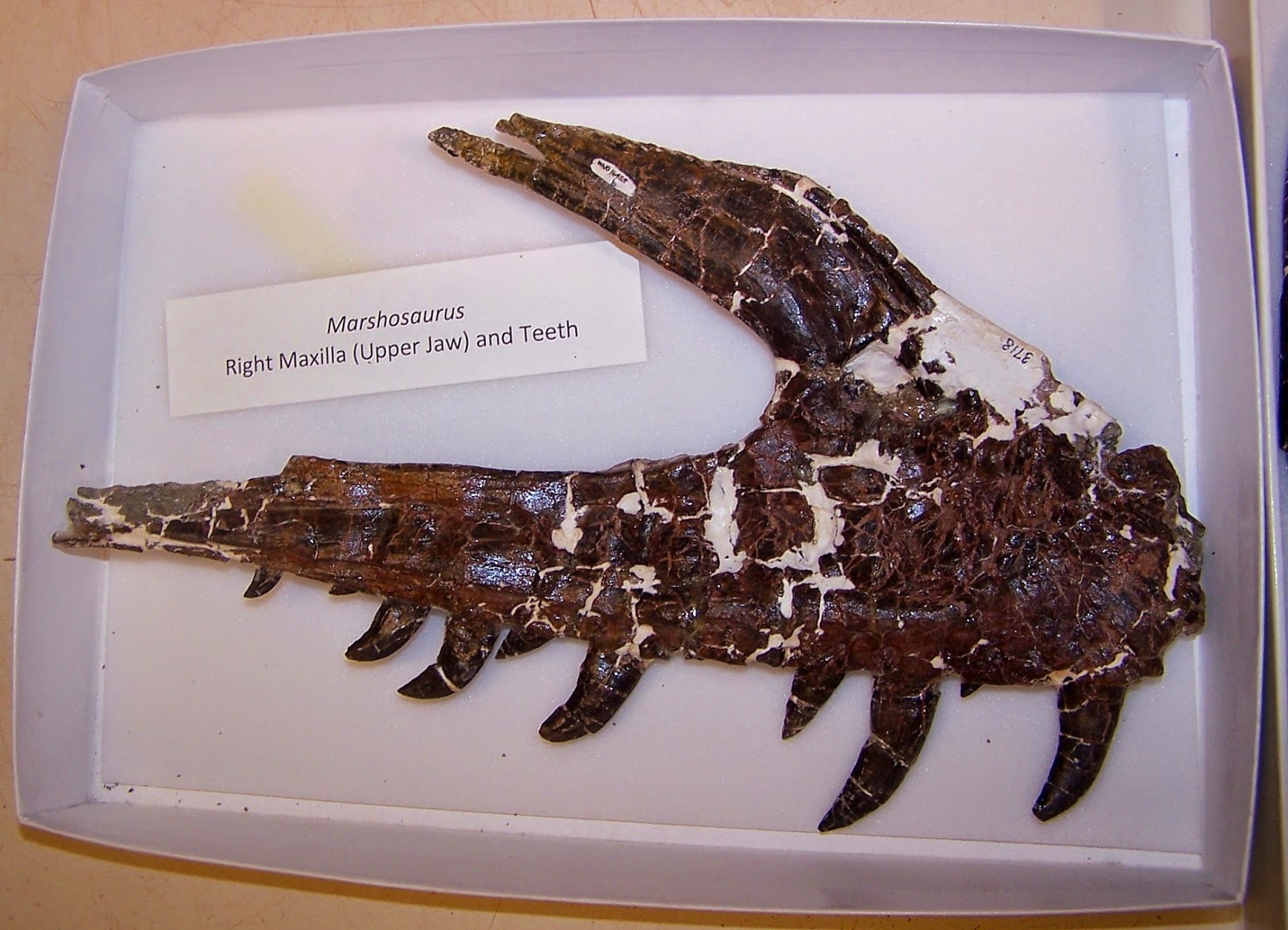We talked about the poposaurs in a recent post which you can read by clicking HERE. The poposaurs, as well as the rauisuchians, were both members of a large group that many scientists refer to as "pseudosuchians." These animals were crocodilian in nature, and fairly closely related to them. But some pseudosuchians, including some rauisuchians and poposaurs, actually evolved a body design similar to some types of dinosaurs, where they could walk on either two or four feet.
Let's jump back to the sails on the back of Arizonasaurus, Ctenosauriscus, and Spinosaurus. The first two are fairly closely related to each other, but Spinosaurus is not closely related at all, separated by around 150 MY of geologic time. The question is, why would these animals have convergently evolved these sails on their backs? The orthodox answer is that the sails help the animal thermoregulate, that by turning the sail towards or away from the sun, it would help the animal warm up or cool off. Similar ideas have been proposed for other animals that feature similar anatomical structures, such as Stegosaurus with its double row of plates down its back, or the primitive synapsids Dimetrodon and Edaphosaurus.
 |
| A model of a juvenile Stegosaurus from the Morrison Natural History Museum. Other stegosaurs that are very closely related, such as Kentrosaurus and Wuerhosaurus, have very different shaped plates, and a different amount of plates, as well. |
So what do we propose instead? Most likely a means of attracting a mate. In animals today, it is display structures and behavior pertaining to courtship that changes the most. An excellent example of this is the birds of paradise from New Guinea, which we discussed in greater depth in a post with a similar focus, in regards to the plates of Stegosaurus, which you can read HERE.
Sharks, such as the very strange-looking Hybodus, have also been discovered in the Moenkopi Formation.
Where I live in Colorado, the Lykins Formation is approximately contemporaneous with the Moenkopi Formation. The Lykins Formation isn't the most exciting of Colorado's geologic formations (at least not for people interested in fossils or excitement), but stromatolites can be found in some areas of the formation. Stromatolites are layers of wavy and convoluted cyanobacteria that sometimes form in areas of shallow water. Cyanobacteria by themselves aren't very big, as they are simply single-celled photosynthetic bacteria. However, together, the gelatinous secretions they produce is enough to trap the sediment that settles out of the water, forming visible laminations that sometimes fossilize.
Stromatolites were much more common prior to the Cambrian Explosion approximately 500 MYA, as back then there wasn't really anything that could eat it. Believe it or not, layers of cyanobacteria are notoriously bad at running away from herbivores, even something as slow as a snail or a slug. Today, stromatolites are relatively rare, especially considering their past abundance, but you can still find them in isolated areas like Shark Bay, Australia, and Lake Salda in Turkey. Most stromatolites form in areas that discourage herbivore grazing. Shark Bay and Lake Salda are both hypersaline areas, places where most herbivores simply don't want to go (especially slugs and snails). More recently, stromatolite-like growths were found living in an abandoned asbestos mine in Yukon, Canada. This indicates to us that the parts of the Lykins Formation in which the stromatolites are found were likely not conducive to supporting herbivores, perhaps also due to hypersaline conditions.
Join us soon for our next post, in which we look at ancestors of both dinosaurs and mammals that were alive during this time! We will also do a little investigating into different types of dentition, so stay tuned!
Works Cited:






+and+Ribs+on+Display+at+the+Denver+Museum+of+Nature+and+Science+in+Denver+Colorado+Photo+Credit+Zack+Neher.JPG)